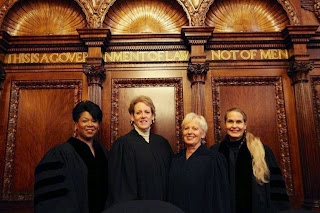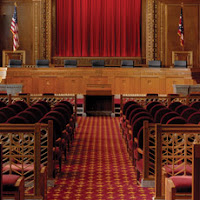As usual, this year we issued over
200 written opinions. You might wonder
what those cases were about. Some cases dealt with court procedure, interesting mainly
to lawyers and judges. Other opinions interpreted laws as
they were applied to particular situations.
We had disciplinary cases where we
decided how those who violated rules that govern the legal profession should be
punished. And most important, we wrote on capital cases. Because Ohio has the
death penalty, life and death hangs in the balance.
A few cases can be singled out this
year. First Amendment cases based on freedom of speech often have media as a
party. But this year, we reviewed rules
relating to a union’s informational picketing and the rights of a middle-school
teacher to use religious materials in science class. Not the typical issues.
Of course we had election issues
and other cases with political overtones. We found one sheriff to be
unqualified to serve his county, and we upheld the Ohio Controlling Board’s
appropriation of money for expanded Medicaid after the governor had vetoed part
of the state’s budget legislation.
In 2013, we looked at what happens
when someone is released from prison because of a mistake in procedure and
answered when that person may be eligible for money from the state for wrongful
imprisonment. We discussed when and how convictions should be sealed from
public view, and if they should be expunged (wiped out completely) upon a
governor’s pardon.
Because the U. S. Supreme Court has
ruled that certain witnesses can’t testify without violating a defendant’s
confrontation rights, a majority of our court decided that in certain
situations teachers cannot testify about what children had told them about
suspected child abuse.
Because of a new law, we decided
unanimously that a doctor’s statement of apology and sympathy could not be used
against him at trial. We handled two cases that explained the law and procedure
relating to mortgage lenders and foreclosures, and we wrestled with the law on
DNA testing requirements after someone is convicted.
And in a criminal case where the
state had to prove the alcohol content in a sale to a minor, we said the court
could not use “judicial notice” by telling the jury that Bud Light was beer and
that it was a fact it was an alcoholic beverage. When the court of appeals reversed the
conviction, the defendant could not be retried because the prosecution had not
presented enough evidence to convict the first time.
These, and all our decisions, are a
matter of public record. The Supreme Court’s website www.supremecourt.ohio.gov will help
you see and hear online the cases that are argued. You can also read the
opinions or summaries when they are published.


























